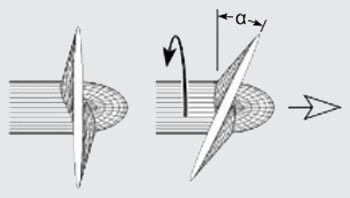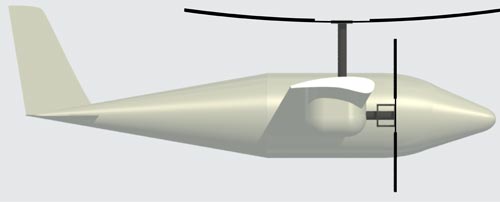VTOL
VTOL
Vertical Take Off and Landing aircraft
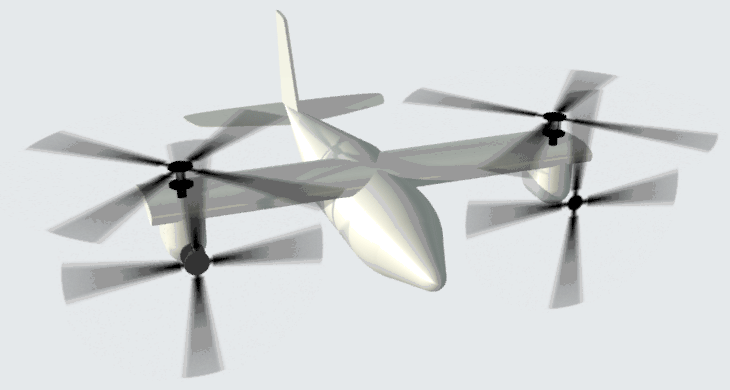
The Air Force is seeking a replacement for the current $110M tiltrotor VTOL. Two VTOL concepts are proposed that avoid the complexity of tiltrotors. Flight is controlled using helicopter-style collective-pitch control of the rotor blades.
These VTOL planes are conceived to be scaled up toy drones rather than a full-size VTOL’s currently on the market. (Amazon has toy VTOL’s for $80).
Version 1:
Other than the obvious requirement that vertical rotors must have sufficient speed for liftoff, the rotor speed can remain constant for most flights, adjusting altitude and forward flight using the rotor blade-pitch angle.
In this compact version, the paths of the rotors overlap eggbeater style, to reduce the size of the craft. The lifting props on top, and forward-facing props, are geared together to keep the rotors in phase.
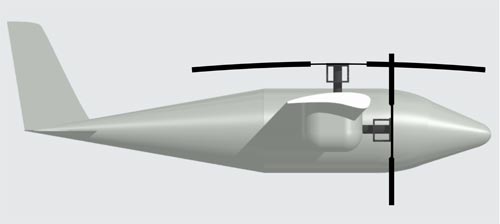
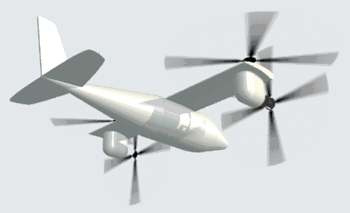 |
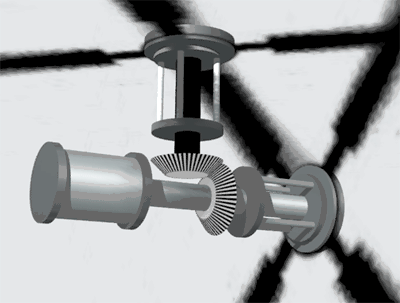 |
| Right-angle gearbox nacelles, are visible under the wings. | Right-angle 45°-bevel gear drive, required to make blades interleave. |
|
Rotor Blade-Pitch Angle
Vertical lift, and forward thrust are determined by rotor-blade pitch angle. |
For liftoff, the top rotors must have sufficient speed (200-500 RPM), and suitable blade-pitch angle. The rotors are geared together and rotate at the same speed; however, the aircraft will not move forward until increasing the rotor-blade pitch angle. |
|
Version 2:
This is a simpler approach using both blade-pitch and rotor speed for lift and forward flight. |
Features shared by both VTOL versions:
Forward speed is not limited to the 250 MPH of helicopters because the blade pitch angle, of the vertical-lifting rotors, is set to 0° so that the rotors slice laterally through the air as the plane flies forward, using the wing airfoil for lift as in a conventional fixed wing airplane.
The vertical lift is independent of forward thrust because it is the blade pitch that determines the thrust in this version.
The proposed VTOL’s are flown with two independent joysticks:
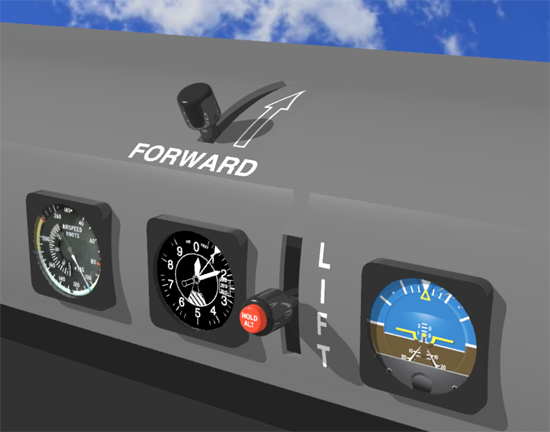
|
Forward Flight Move the vertical joystick forward, and to neutral or reverse blade pitch when landing. |
Altitude Move the “LIFT” joystick up for liftoff and with the ability to maintain altitude with the red “altitude hold” button. |
Roll and yaw are handled with differential blade-pitch angle on the right and left rotors.
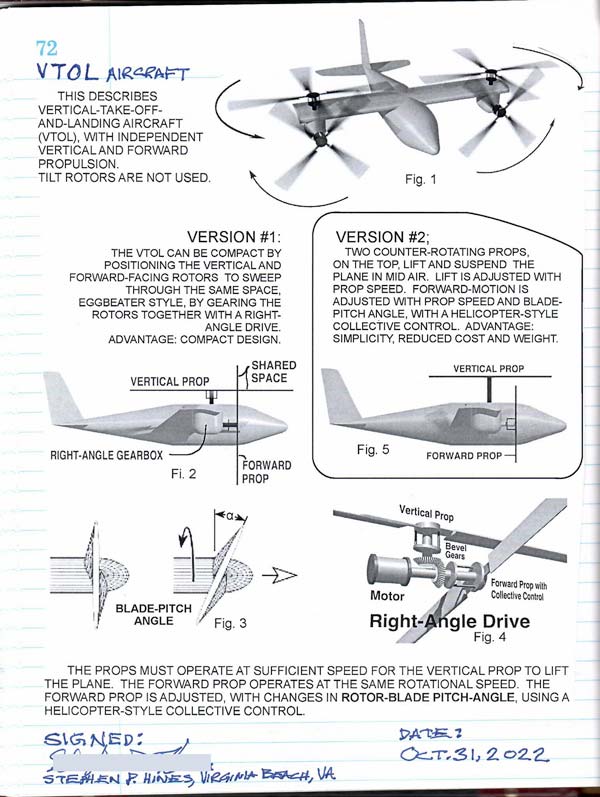
HinesLab is actively seeking licensees to commercialize these concepts. To discuss licensing, please contact Steve Hines at:
USA
phone: 818-507-5812
email: Steve@HinesLab.com

